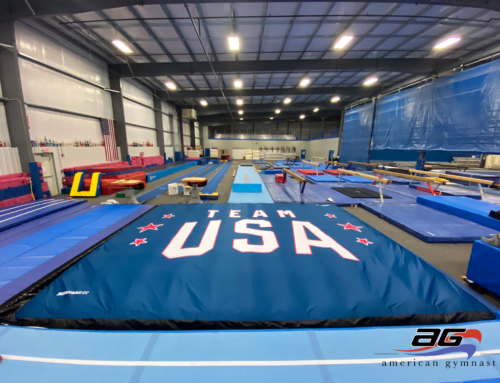It’s been seven years since Romania has stood atop a world or Olympic podium. Its 2004 Olympic team was one of its best ever, as it not only hit 12 for 12 routines in the team final to overtake a powerful and heavily favored American squad, but it won three of four available gold medals in the event finals, along with an additional silver on floor and bronze on beam. Two of those gold medals in the event finals were won by Catalina Ponor, who at 24 years of age has now made a comeback to major competition.
Ponor’s performance at this weekend’s Romanian Nationals has stamped her comeback as one of the most legitimate and impressive comebacks of all time. Returning to elite gymnastics with Olympic aspirations at 19+ years of age has become a worldwide trend in women’s gymnastics over the past several years, with numerous past Olympians like Alicia Sacramone, Chellsie Memmel, Shawn Johnson, Sandra Izbasa, and Cheng Fei all shooting for London 2012. But very, very few have ever returned to competition looking every bit as fit, every bit as sharp, and every bit as confident as they looked before taking years off of the sport. At 24 years of age, Catalina Ponor has done just that:
Catalina Ponor Beam 2011 Romanian Nationals
Catalina Ponor Floor 2011 Romanian Nationals
Catalina Ponor Vault 2011 Romanian Nationals
Incredibly, she looks every bit the gymnast she was when she wore three Olympic gold medals around her neck in 2004. Her beam is already once again one of the very best in the world, her floor includes an upgraded tumbling pass from her past routines (two whips to piked full-in) and exhibits some of the best presentation and choreography you’ll see anywhere, and her vault is clean and solid. Barring injury, she’s not only a shoo-in for Tokyo, but she’ll be a world medal contender on beam and floor and will help elevate Romania to a status it hasn’t seen since Athens 2004.
Vault and bars will remain weak for the Romanians in comparison to Russia, the U.S., and China, and bars in particular will be interesting since both Izbasa and Ponor will both be expected to make the world squad. The team will need four scores to put up in preliminaries, and unless one of these two has some sort of bar routine to throw in Tokyo, they may not be able to throw out any scores on this event (note Izbasa was seen training bars on video earlier this year, however). They also don’t have the Amanars on vault that Russia and the U.S. do, which will potentially put them a couple of points behind on that event. Although these weaknesses are certainly there, let’s not forget that one fall is a full point deduction, and thus that 2-3 point deficit from vault could disappear quite quickly in a 3-up-3-count team finals. Furthermore, I believe with the addition of Ponor, the Romanians could potentially outscore all of the other teams on both beam and floor. Anna Porgras is looking better than ever (scored even higher than Ponor on beam and has a new double layout on floor), and Sandra Izbasa regained her Olympic champion form this year with European titles on both vault and floor.
Russia and the U.S. have both been dealt big hits with the losses of Aliya Mustafina and Rebecca Bross, and China, though still strong, has yet to regain the consistency and well-rounded depth it had in 2008. This now powerful Romanian team that was outclassed for a spot on the podium at worlds last year could suddenly be a serious threat for a medal of any color in Tokyo. They seem to be quickly regaining the consistency and momentum we’ve seen from past great Romanian teams, and just in time for the final world championships of the quadrennial and for the London Olympics next summer. I think the battle for the 2011 women’s world team title, initially presumed to include Russia, the U.S. and possibly China, may have a brand new player.



Awesome blog, it’s just like a game for me! It’s so infomative and usefull, thanks a lot! If you post more of this great stuff, I’ll visit your blog again!